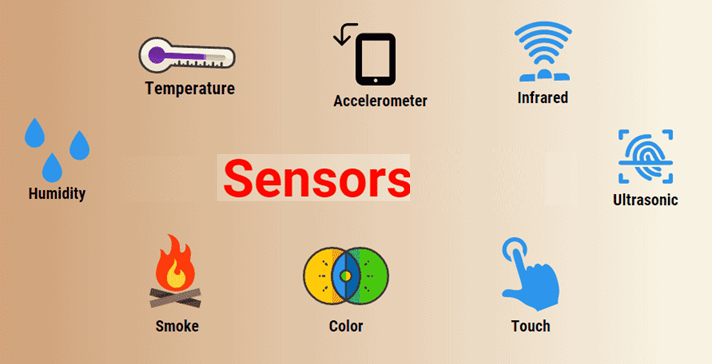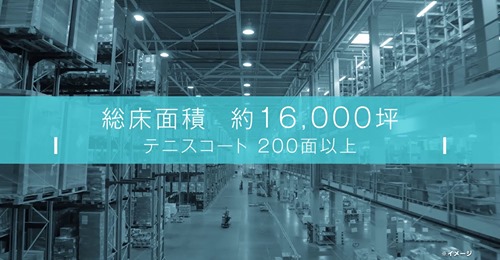
1/ Introduction:
Sensors form the cornerstone of modern automation, enabling systems to perceive and interact with the physical world. From industrial IoT deployments to consumer electronics, sensors detect environmental changes - such as temperature, pressure, and motion - and convert them into electrical signals for monitoring, control, and analytics. Their evolution, driven by advances in microelectronics and wireless communications, has led to compact, intelligent devices that underpin the transformative paradigm of the Internet of Things (IoT).
2/ Fundamental Concepts and Definitions:
A sensor is a device or module designed to detect variations in physical, chemical, or biological parameters and transduce them into measurable electrical signals. Core components include:
- Receptor: captures the primary stimulus (e.g., light, heat, force).
- Transducer: converts the stimulus into an electrical form, such as a change in voltage, current, or resistance.
- Signal conditioning: amplifies, filters, and linearizes the raw signal, preparing it for digital conversion.
- Output interface: presents the processed signal via analog (4 - 20mA, 0 - 10V) or digital (I²C, SPI, Modbus) formats for downstream systems.
Some sensors integrate feedback loops to auto calibrate and maintain accuracy under varying environmental conditions.
3/ Classification of Sensors:
3.1/ Based on Measurand:
- Physical: temperature, pressure, acceleration, light, proximity, vibration.
- Chemical: gas concentration (CO2, O2), pH, humidity, chemical species.
- Biological: glucose, enzymes, DNA/RNA, pathogens.
3.2/ Based on Power Requirement:
- Active sensors require an external excitation (e.g., capacitive sensors driven by an AC source).
- Passive sensors generate their own signal without external power (e.g., thermocouples).
3.3/ Based on Conversion Phenomenon:
- Photoelectric: convert light intensity into electrical signals (photodiodes).
- Thermoelectric: exploit the Seebeck effect in thermocouples.
- Electromagnetic: utilize inductance or Hall effect for proximity and current sensing.
- Electrochemical: detect chemical species via redox reactions (ion-selective electrodes).
- Piezoelectric: generate charge under mechanical stress (microphones, accelerometers).
3.4/ Based on Output Type:
- Analog sensors provide a continuous voltage or current proportional to the measurand.
- Digital sensors output discrete codes or communicate via serial buses, enabling easy integration with microcontrollers and networked systems.
4/ Sensor Construction and Components:
A typical sensor comprises:
4.1/ Sensing Element:
The active material or structure directly exposed to the measurand (e.g., a platinum RTD filament or a piezoresistive diaphragm).
4.2/ Signal Conditioning Circuitry:
Low-noise amplifiers, filters, analog-to-digital converters (ADCs), and compensation networks to ensure accuracy and stability.
4.3/ Housing & Environmental Protection:
Packaging materials (stainless steel, plastic, ceramics) provide mechanical support, chemical resistance, and ingress protection (IP ratings) for harsh environments.
4.4/ Communication Interface:
Terminals or connectors for power, analog current/voltage loops, RS-485, Ethernet, or wireless modules (BLE, LoRaWAN) for remote monitoring.
Modular design and standardized form factors (M12, 1/4″ NPT) facilitate easy installation and replacement in industrial settings.
5/ Operating Principles of Key Sensor Types:
5.1/ Temperature Sensors:
- Thermocouples: Junctions of dissimilar metals produce a voltage proportional to temperature difference (Seebeck effect).
- RTDs: Metal (commonly Pt100) resistors exhibit predictable resistance changes with temperature, offering high accuracy over a wide range.
- Thermistors: Semiconductor ceramics (NTC/PTC) provide high sensitivity over a narrower temperature span.
5.2/ Pressure Sensors:
- Piezoresistive: Strain gauges bonded to a diaphragm change resistance under deflection.
- Capacitive: Distance between electrodes varies with diaphragm movement, altering capacitance.
- Piezoelectric: Generate charge under dynamic pressure, ideal for transient or vibration measurements.
5.3/ Optical Sensors:
- Photodiodes/Phototransistors: Generate current proportional to incident light intensity.
- CCD/CMOS Arrays: Capture spatial image data for machine vision and consumer cameras.
- Infrared (IR): Passive IR detectors sense emitted thermal radiation; active IR sensors use an IR source for proximity and motion detection.
5.4/ Ultrasonic Sensors:
Transmit high-frequency sound pulses and measure echo time to determine distance or fluid flow. They excel in non-contact level measurement and obstacle detection, unaffected by color or transparency of targets.
5.5/ Magnetic Sensors:
- Inductive: Eddy-current interactions detect metal objects without contact.
- Hall Effect: Transverse voltage developed across a current-carrying semiconductor strip in a magnetic field, used for position, speed, and current sensing.
6/ Performance Parameters:
|
Parameter |
Definition |
|---|---|
|
Range |
Span of detectable values for the measurand. |
|
Resolution |
Smallest change in input that the sensor can discern. |
|
Accuracy |
Maximum deviation of output from true value under specified conditions. |
|
Linearity |
Deviation of the transfer characteristic from an ideal straight line. |
|
Response Time |
Time to achieve 90% of the final output after a step change in input. |
|
Stability/Drift |
Change in output over time or with temperature under constant conditions. |
|
Operating Temperature |
Ambient range in which the sensor meets performance specifications. |
|
MTBF (Mean Time Between Failures) |
Statistical measure of reliability over continuous operation. |
Understanding these metrics is critical for selecting sensors that meet system requirements in terms of speed, precision, and environmental resilience.
7/ Signal Conditioning and Interfaces:
Signal conditioning transforms raw sensor outputs into robust, usable signals:
- Amplification: Increases low-level signals (µV to mV) for processing.
- Filtering: Removes high-frequency noise or power-line interference.
- Linearization: Corrects non-linear transfer curves via hardware or firmware.
- Isolation: Galvanic separation protects against ground loops and high voltages.
Standard industrial interfaces include:
- Analog loops (4 - 20mA) for long-distance noise immunity.
- Voltage outputs (0 - 10V) compatible with DAQ modules.
- Digital buses (Modbus RTU/TCP, HART) enabling remote configuration and diagnostics.
- Embedded interfaces (I²C, SPI, UART) for compact IoT and microcontroller systems.
8/ Communication Protocols and Integration:
Modern sensors often embed microcontrollers and radios, forming “smart sensors” that preprocess data and communicate wirelessly. Key integration patterns:
- Edge Intelligence: On-sensor analytics reduce data traffic and latency.
- Mesh Networking: Zigbee or Thread protocols create self-healing sensor networks.
- Cloud Connectivity: MQTT over TCP/IP enables real-time dashboards and scalable data storage.
- Digital Twins: Live sensor feeds drive virtual models for system optimization.
Interoperability standards (e.g., OPC UA, IEEE 1451) ensure seamless integration of heterogeneous sensor arrays in Industry 4.0 architectures.
9/ Calibration and Compensation Techniques:
Accurate sensing demands periodic calibration and environmental compensation:
- Factory Calibration: Multi‐point reference measurements produce correction coefficients.
- Field Calibration: On-site checks against portable standards to account for installation effects.
- Temperature Compensation: Integrated RTD or thermistor measures ambient temperature to adjust outputs.
- Offset and Span Adjustments: Zero and full‐scale corrections mitigate drift over time.
Advanced sensors may include self-calibration routines and digital calibration data stored in EEPROM for plug-and-play accuracy.
10/ Industrial and Consumer Applications:
Sensors permeate virtually every domain:
- Industrial Automation: Robotic feedback, process control (pressure, flow, level), predictive maintenance via vibration analytics.
- Automotive: Engine management (MAF/MAP, O2), safety systems (ABS, airbags), autonomous driving (LiDAR, radar).
- Healthcare: Wearables for heart rate, SpO2, continuous glucose monitors; non-contact infrared thermometers.
- Agriculture: Soil moisture probes for precision irrigation; multispectral imaging for crop health assessment.
- Smart Homes: Motion detectors, ambient light sensors for energy-efficient lighting, air-quality monitors, smart thermostats.
- Consumer Electronics: Accelerometers and gyroscopes for gesture control; proximity sensors and ambient light sensing in smartphones.
11/ Emerging Trends and Future Directions:
- MEMS and NEMS: Nano-engineered sensors with ultralow power consumption and high sensitivity.
- Flexible and Wearable Sensors: Printed electronics on textiles and skin-like substrates for ubiquitous health monitoring.
- Nanomaterial-Enhanced Sensors: Graphene and carbon nanotubes offering enhanced chemical selectivity and sensitivity.
- Quantum Sensors: Exploiting quantum coherence for unprecedented precision in magnetic and gravitational measurements.
- Sensor Fusion: Combining multiple modalities (e.g., IMU + GNSS) for robust situational awareness.
- Edge AI Integration: Machine learning models embedded on-sensor for anomaly detection and predictive insights.
These advances promise to extend sensor capabilities into new realms - from smart fabrics and environmental monitoring swarms to autonomous systems with human-level perception.
12/ Conclusion:
This in-depth overview has traversed fundamental definitions, classification schemes, construction elements, operating principles, performance metrics, and integration strategies for sensors. By understanding these facets, engineers can judiciously select, deploy, and maintain sensor systems tailored to diverse applications - driving innovation across industrial automation, healthcare, automotive, agriculture, and consumer domains. Continuous advancements in MEMS, nanotechnology, and edge computing herald an exciting future where sensors become ever more ubiquitous, intelligent, and indispensable.
Where to buy sensors?
Sensors are increasingly popular in most factories. You can easily find them at many suppliers. However, to buy genuine products with good quality, professional consulting support policies and clear usage, you should choose reputable suppliers with many years of experience in the market.
Currently, QTE Technologies is providing sensor lines from Japanese, American and German brands with high quality, durable operation even in harsh environmental conditions. We are proud to be a global MRO supplier, serving customers in more than 180 countries and always strive to ensure customers have a complete and satisfied experience. We were established in 2010, supplying more than 1 million products for all industries and science and technology. Alternatively, you can reach us anytime via 24×7 chat support, phone, WhatsApp or email. Discover what our valued customers have to say about our services on our dedicated review page.
Author: Editorial team of QTE Technologies (with a strong background in both engineering and creativity - over 15 years of experience).




